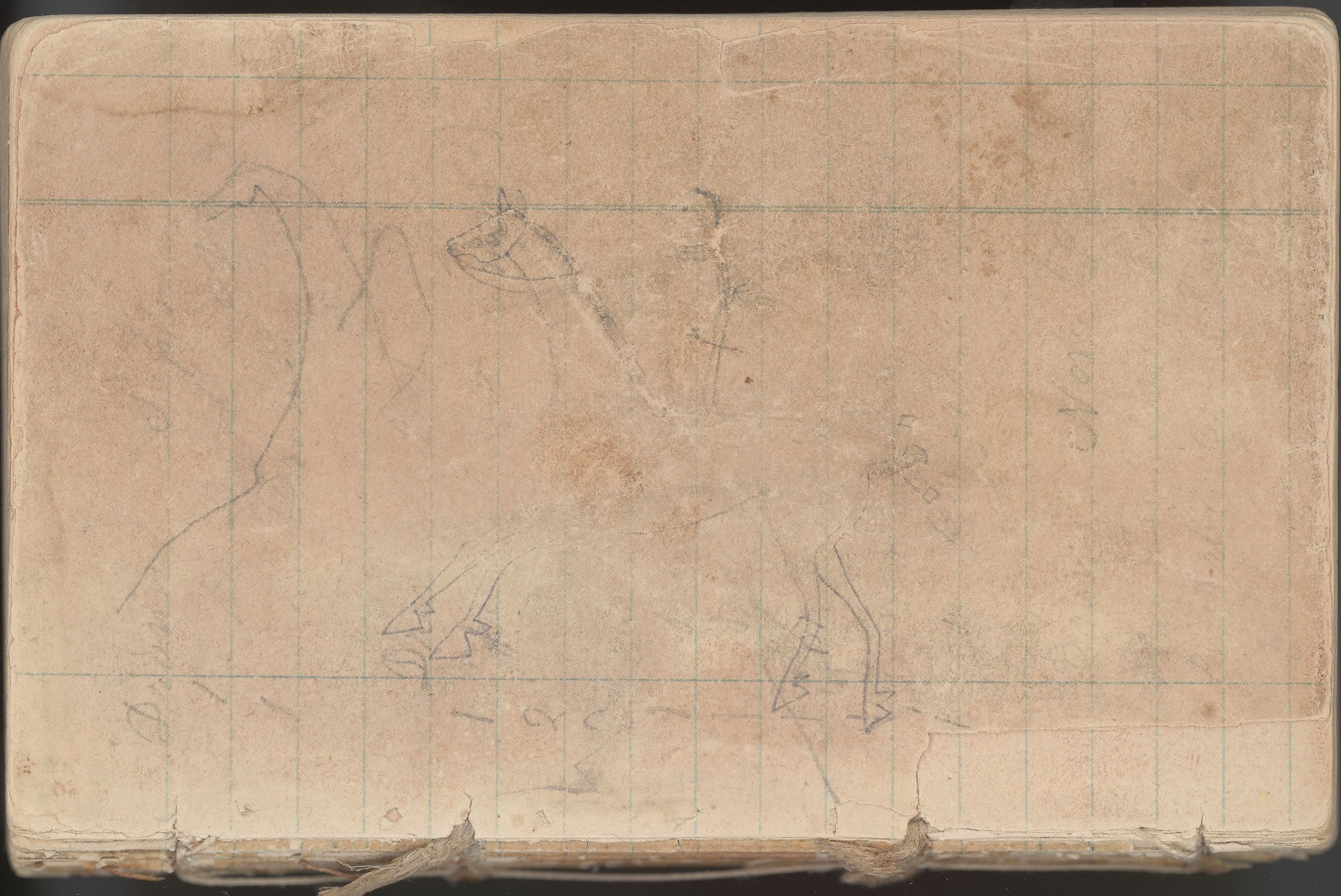Soldier's Diary Ledger Provenance

Gift to Nebraska State Historical Society by Philip Kearney Moore on 11/28/1928.
Collected by Edward Moore, who settled in Kenewaw Precinct, Adams County, NE in 1872, "from a derelict returning from the Black Hills in 1877, whose statement was that that he had taken it from a dead Indian the year before whom he stated was killed by solders in that year (1876)."
The diary contains the roster of the names of a cavalry company which left Fort Sill, Indian Territory shortly after the Battle of Little Bighorn and whose destination was the Black Hills. At some point the diary came into the possession of an Indian artist or artists.
History: This small pocket diary at one time belonged to a soldier of the Fourth U.S. Cavalry during the summer and fall of 1876. At this time Col. Ranald MacKenzie commanded the regiment.
The diary contains brief entries documenting the Fourth Cavalry's movement from Fort Sill, I.T., beginning in August 1876. Although not included in the entries, the Fourth Cavalry arrived at Camp Robinson, Nebraska, on or about August 13. While at Camp Robinson, the regiment captured, disarmed, and dismounted the followers of Red Cloud and Red Leaf on Chadron Creek and forced the Indians to return to Red Cloud Agency. There is no reference in the diary to this episode. Entries resume Nov. 1, as the regiment left Camp Robinson en route to Fort Laramie, where it would join Gen. George Crook's winter campaign against the Sioux and Cheyennes. The diary notes the location of the Fourth Cavalry's camps from Camp Robinson to Fort Laramie, from Fort Laramie to Fort Fetterman, and from Fort Fetterman to Fort Reno, where the regiment arrived about Nov. 18. That date is the last entry in the diary.
Subsequent to the dates recorded in the diary, the Fourth Cavalry marched to the Red Fork of the Powder River, where on Nov. 25 it surprised and defeated Dull Knife's village of Cheyennes. This is a well-known episode of the Sioux War of 1876-77, and is recorded in numerous sources. In addition to the Fourth U.S. Cavalry, the force that attacked the Cheyenne village included Sioux, Arapaho, Shoshone, and Pawnee Indian scouts.
The donor's story is that his father purchased the diary in 1877 from a "derelict" leaving the Black Hills. The "derelict" said he had taken it from a dead Indian in 1876, who had been killed by soldiers. If the donor's story were true, the artist would have obtained the book sometime between November 18, 1876, and the end of the year.
The diary was in possession of its original author until at least Nov. 18, 1876, and documents a portion of the regiment's campaign that culminated in the destruction of Dull Knife's village of Cheyennes on Nov. 25, 1876.